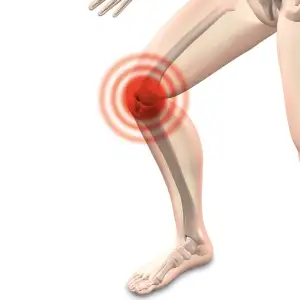Delicious and Nutritious: Discover 10 Healthy Meals for Weight Loss

- The Importance of a Balanced Diet
- Incorporating Lean Protein Sources
- Including Fiber-Rich Foods for Satiety
- Emphasizing Whole Grains for Sustained Energy
- Adding Healthy Fats in Moderation
- Incorporating a Variety of Fruits and Vegetables
- Avoiding Processed Foods and Added Sugars
- Portion Control and Mindful Eating
When it comes to weight loss, many people often think of restrictive diets and bland meals. However, achieving a healthy weight doesn't have to mean sacrificing taste and enjoyment. In fact, there are numerous delicious and nutritious meals that can aid in your weight loss journey. By incorporating the right balance of nutrients and making mindful choices, you can create a meal plan that not only helps you shed those extra pounds but also keeps you satisfied and energized throughout the day. In this article, we will explore 10 healthy meals that promote weight loss while tantalizing your taste buds. Get ready to discover a world of flavors that will help you achieve your weight loss goals without compromising on taste or nutrition.
The Importance of a Balanced Diet
A balanced diet is crucial for weight loss as it provides the body with all the necessary nutrients while reducing calorie intake. It ensures that you get a variety of vitamins, minerals, and antioxidants to support overall health. A well-balanced diet also helps regulate blood sugar levels and keeps cravings at bay. By including a mix of lean proteins, whole grains, healthy fats, fruits, and vegetables in your meals, you can create a sustainable eating plan that promotes weight loss without compromising on taste or nutrition.
Incorporating Lean Protein Sources
Incorporating lean protein sources is essential for a healthy and effective weight loss journey. Protein not only helps to build and repair tissues, but it also keeps you feeling full and satisfied for longer periods of time. Opt for lean options such as skinless chicken breast, turkey, fish, tofu, or legumes like lentils and beans. These protein-rich foods are low in calories and fat, making them ideal choices for weight loss. Remember to prepare them using healthy cooking methods such as grilling, baking, or steaming to maintain their nutritional value.
Including Fiber-Rich Foods for Satiety
One key component of a healthy meal plan for weight loss is incorporating fiber-rich foods. Fiber not only aids in digestion but also provides a feeling of fullness, helping to curb cravings and prevent overeating. Foods such as fruits, vegetables, whole grains, legumes, and nuts are excellent sources of fiber.
Including these foods in your meals can help you feel satisfied for longer periods and reduce the chances of snacking on unhealthy options. Opt for whole fruits instead of fruit juices to maximize fiber intake. Adding vegetables like broccoli, spinach, and Brussels sprouts to your dishes can increase the fiber content while adding essential vitamins and minerals.
Additionally, incorporating whole grains like quinoa, brown rice, and oats into your diet can provide a good amount of fiber while keeping you energized throughout the day. Legumes such as lentils and chickpeas are also high in fiber and can be added to soups or salads for a satisfying meal.
By including fiber-rich foods in your diet, you not only promote satiety but also support overall digestive health. Make sure to gradually increase your fiber intake to avoid any discomfort or bloating. Aim for around 25-30 grams of fiber per day as part of a balanced meal plan for weight loss.
Emphasizing Whole Grains for Sustained Energy
Emphasizing whole grains in your diet is crucial for sustained energy levels and weight loss. Unlike refined grains, which are stripped of their nutrients and fiber, whole grains contain all parts of the grain - the bran, germ, and endosperm. This means they are rich in fiber, vitamins, minerals, and antioxidants.
Whole grains such as quinoa, brown rice, oats, and whole wheat bread provide a slow release of carbohydrates into the bloodstream. This steady supply of energy helps to keep you feeling fuller for longer and prevents spikes in blood sugar levels that can lead to cravings.
Incorporating whole grains into your meals is easy. Start by swapping out refined grains with their whole grain counterparts. For example, choose brown rice instead of white rice or opt for whole wheat pasta instead of regular pasta. You can also experiment with different types of whole grains like barley or bulgur to add variety to your meals.
To maximize the nutritional benefits of whole grains, it's important to cook them properly. Follow package instructions or use recipes that provide specific cooking times and methods. This ensures that you don't overcook or undercook the grains, allowing you to enjoy their full flavor and texture.
By emphasizing whole grains in your diet, you not only promote weight loss but also support overall health and well-being. So go ahead and explore the world of delicious whole grain recipes to create a sustainable meal plan that will keep you energized throughout the day while helping you shed those extra pounds.
Adding Healthy Fats in Moderation
Contrary to popular belief, not all fats are bad for you. In fact, incorporating healthy fats into your diet can actually aid in weight loss. Healthy fats, such as those found in avocados, nuts, and olive oil, provide essential nutrients and help keep you feeling satisfied.
When it comes to adding healthy fats to your meals, moderation is key. While these fats are beneficial for weight loss, they are still high in calories. Aim to include a small portion of healthy fats in each meal to reap their benefits without going overboard.
For example, drizzle some olive oil on your salad or use avocado as a spread instead of butter on your toast. These small additions can enhance the flavor of your meals while providing the necessary healthy fats.
Remember, balance is crucial when it comes to incorporating healthy fats into your diet. Be mindful of portion sizes and opt for natural sources rather than processed options. By doing so, you can enjoy the benefits of healthy fats while working towards your weight loss goals.
Incorporating a Variety of Fruits and Vegetables
Incorporating a variety of fruits and vegetables into your meals is essential for weight loss. Fruits and vegetables are low in calories but high in nutrients, making them the perfect addition to any healthy meal plan. They are packed with vitamins, minerals, and antioxidants that support overall health and help to keep you feeling full and satisfied. Aim to include a rainbow of colors on your plate, such as leafy greens, vibrant berries, crunchy carrots, and juicy tomatoes. Experiment with different cooking methods like roasting or grilling to enhance their flavors. By incorporating a variety of fruits and vegetables into your meals, you'll not only add delicious flavors but also boost your weight loss journey with their nutritional benefits.
Avoiding Processed Foods and Added Sugars
When it comes to weight loss, one of the key factors to consider is avoiding processed foods and added sugars. These types of foods are often high in calories, low in nutrients, and can lead to weight gain. Processed foods are typically loaded with unhealthy fats, sodium, and artificial additives that can wreak havoc on your health.
Instead, opt for whole, unprocessed foods that are naturally low in sugar. This includes fresh fruits and vegetables, lean proteins such as chicken or fish, whole grains like quinoa or brown rice, and healthy fats like avocado or olive oil. By choosing these nutrient-dense options, you'll not only nourish your body but also feel fuller for longer periods of time.
In addition to avoiding processed foods, it's important to be mindful of added sugars. Many packaged products contain hidden sugars that can quickly add up in calories without providing any nutritional value. Be sure to read food labels carefully and choose items that have little to no added sugars.
By making these simple changes to your diet and focusing on whole foods rather than processed ones, you'll be well on your way to achieving your weight loss goals. Remember, a balanced diet is key when it comes to shedding pounds and maintaining a healthy lifestyle.
Portion Control and Mindful Eating
Portion control and mindful eating are crucial aspects of a healthy meal plan for weight loss. It's not just about what we eat, but also how much we eat. By being mindful of our portion sizes, we can ensure that we are consuming the right amount of calories to support our weight loss goals.
One effective strategy is to use smaller plates and bowls to help control portion sizes. This tricks our brain into thinking that we are eating more than we actually are. Additionally, taking the time to chew slowly and savor each bite can help us feel more satisfied with smaller portions.
Another important aspect of mindful eating is listening to our body's hunger and fullness cues. It's essential to eat when we are truly hungry and stop eating when we feel comfortably full. This means paying attention to how our body feels during and after meals.
To further promote portion control, it can be helpful to pre-portion snacks and meals ahead of time. This prevents mindless overeating and allows us to have a clear understanding of how much food we are consuming.
By practicing portion control and mindful eating, we can create a sustainable and enjoyable meal plan for weight loss. It allows us to maintain a healthy balance between nourishing our bodies with nutritious foods while still enjoying the flavors and satisfaction that food brings.
In conclusion, creating a sustainable and delicious meal plan for weight loss is essential for long-term success. By incorporating lean protein sources, fiber-rich foods, whole grains, healthy fats, and a variety of fruits and vegetables, you can ensure that your meals are both nutritious and satisfying. It is also important to avoid processed foods and added sugars, as they can hinder your weight loss goals. Additionally, practicing portion control and mindful eating will help you maintain a balanced diet. Remember, the key to successful weight loss is finding a meal plan that works for you and fits into your lifestyle. So get creative in the kitchen and enjoy the journey towards a healthier you!
Published: 22. 12. 2023
Category: Health



